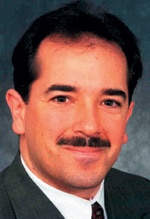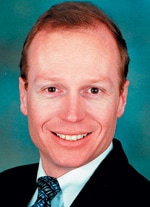Selecting a 401(k) Plan Provider: Navigating the Maze
There are thousands of 401(k) plan providers to choose from. The consequences of making the wrong choice can be painful.
For US companies, a 401(k) plan is an important tool to attract and retain competent employees and to help them prepare for a comfortable retirement. But these plans can also be the source of heartbreak and lawsuits if not handled properly.
On June 26 the US Department of Labor sued Enron, its former top executive officers Kenneth L. Lay and Jeffrey K. Skilling, the companys former board members and the former administrative committee of Enrons retirement plans for failing to prudently protect plan assets invested in Enron stock. The suit, which was filed in federal district court in Houston, seeks an order requiring the defendants to restore to the plans all losses with interest, forfeit their right to benefits from the plans and be permanently barred from serving as fiduciaries to any plan governed by ERISA.
The Employee Retirement Income Security Act of 1974, ERISA also makes vendor selection a fiduciary responsibility. Fiduciaries must operate their plans solely for the benefit of plan participants and beneficiaries. Not only are fiduciaries personally liable for plan losses in the case of negligence or wrongdoing, but the company also is subject to negative publicity, says Pat Pou, Tampa, Florida-based principal at William M. Mercer, the human-resources consulting business of Marsh & McLennan.
Governance issues are getting to be very important in the post-Enron environment, Pou says. A plan sponsor needs to make sure that it exercises due diligence to hire a quality vendor. If the members of a selection committee do not have the expertise to do a thorough job, they should obtain expert advice, she says.
Bewildering Choice
The vast majority of large US companies already have established 401(k) plans. Philadelphia-based Hay Group, which maintains a database of benefits practices by US companies, found in its annual survey of more than 1,000 mid-size to large companies that 98% sponsored pre-tax retirement plans in 2002.
Joshua D. Dietch, associate director at Cerulli & Associates, a Boston-based management consulting and research firm, says there has been some consolidation in the ranks of plan providers in recent years. Still, there are hundreds, if not thousands, of providers for small companies to choose from. If a company has 50,000 employees, however, there are only a handful of providers with the capability to adequately serve its 401(k) plan needs, Dietch says.
Bringing in the Big Guns
Among the major providers with the ability to serve the biggest companies, Dietch says, are Fidelity Investments, Mellon Financial, CitiStreet (a State Street and Citigroup company), Hewitt Associates, Vanguard Group and Principal Financial Group. He says that approximately 75% of all 401(k) plans are served by providers that offer a bundled package of services. Even the big companies dont do the record-keeping and plan administration themselves, he says.

|
|
|
It is impossible to generalize about whether a company is better off choosing a service provider that is an insurance company, a mutual fund group, a bank, brokerage house or third-party administrator, Dietch says. Good providers come in every stripe, he says. It depends on what you want.
Jeffrey L. Boyle, senior vice president and manager of investment services and asset management at Union Bank of California in San Francisco, says there are advantages to choosing a bank, rather than a fund group, to manage your 401(k) plan. Union Bank is the second-largest commercial bank in California and the largest bank provider of bundled 401(k) services on the West Coast. It has clients in 40 US states. The bank targets middle-market companies with up to 1,000 employees and $5 million or more in plan assets. It has $21 billion of defined-benefit assets under administration for 1,300 plans.
An independent bank is not pushing its own investment agenda, Boyle says. The fund companies want your investment-management business. We are not a mass-marketer. We develop relationships and partnerships with our clients. Hands-on servicing and flexibility in meeting customer needs are keys to success in the business, he says. With the banks open-architecture platform, customers can choose from more than 1,000 funds. We have clients who just love us, Boyle says. With some of the larger fund providers, its Do it our way, or its the highway. We are flexible and dont put our customers in a box.
Union Bank and Los Angeles-based 401(k) Pro have developed a Web-based plan-administration service for small businesses. The service allows clients to set up low-cost plans with numerous options.
First Steps
The first step in selecting a plan provider should be to define an appropriate field of vendors, says William M. Mercers Pou. Mercers clients typically include companies with from 2,000 to 5,000 or more employees. When helping a client to select a provider, we read the plan documents and look for unusual provisions, Pou says. Then we screen our database and use our knowledge of the marketplace to come up with a list of four or five potential vendors.

|
|
|
Take a Longer View
Prompted by the declines in the stock markets over the past few years, many companies are paying more attention to the investment performance of their retirement funds. In fact, the best time for long-term investors to accumulate shares at low cost is when stock prices are down, advisers note.
In comparing investment managers, you need to look at a longish period, usually five years, and compare the performance to various indexes and peer-group benchmarks, Pou says. You should know who the manager is and whether or not there have been any recent changes in investment style.
The education provided to plan participants is another important consideration in selecting a vendor. There isnt just one audience in a company, Pou says. There are many types of 401(k) investors with varying levels of sophistication and at different points in their careers.
While many major US corporations match employee contributions to their retirement plans, usually with company stock, the practice may be declining. Since the recession of 2001, some companies have become less generous in the proportion of contributions they will match or have ended matching entirely. Charles Schwab, Textron and Prudential Securities, for example, suspended matching contributions for 2003. Ford Motor and DaimlerChrysler did the same for 2002 and 2003. Whether these changes in matching policies are permanent or temporary could have a major impact on the proportion of workers who participate in 401(k) plans.
Meanwhile, as technology evolves and outsourcing becomes less expensive, some plan sponsors are seeking to shift additional responsibilities to external vendors.
Jon C. Chambers, principal at San Francisco-based Schultz Collins Lawson Chambers, an independent investment advisory firm that offers a provider-evaluation service, says many plan sponsors make frequent changes to their service vendors.
In setting up a selection committee to evaluate plan providers, Chambers says, a company needs to include participants from a range of disciplines. The plan sponsor needs to consider which investment and service configurations best suit its needs, he says.
The most common investment structure is a menu of funds, which offers a set selection of about a dozen investment choices. Any more than that tends to be too confusing to plan participants. Other investment approaches, which are gaining in popularity, include a diversified portfolio managed to meet specific risk and reward targets, and unrestricted investments selected by plan participants through a brokerage account. Fees are usually higher, however, under the self-directed approach, which is appropriate only for sophisticated investors. For many plan participants, their 401(k) holdings are their sole investment.
The Search for Quality

|
|
|
Most companies with between 1,000 and 10,000 plan participants select the bundled-service model, whereby a single vendor provides all investment, record keeping, administrative and education services, Chambers says. However, more than half of the sponsors of very large plans, those with more than 10,000 participants, choose the unbundled approach, he says. This allows the sponsor to provide services through a combination of in-house staff and independent service providers, which allows for greater flexibility. A plan sponsor can change an investment manager, for example, but keep its other service providers. The cheapest provider is not always the best choice, Chambers notes.
Calling on the Experts
When it comes to measuring past performance, Chambers recommends hiring an investment consultant to conduct statistical tests. Consider the example of two investment managers who both beat the Standard and Poors 500-stock index by 12% a year for the past three years, he says. If one manager accomplished this by being 1% better than the index every month for 36 months in a row, this manager is consistently adding value. If the second manager was up 10% one month and down 5% the next month, then up 3% and down 12%, this is not a predictable pattern.
Financial institutions and funds may provide investment advice directly to plan participants, as long as the advice is based on the programs and methodology of a third-party, independent adviser.
In June 2001, for example, the Valley Forge, Pennsylvania-based Vanguard Group of mutual funds entered into a relationship with Financial Engines, a California-based investment advisory service, to provide investment recommendations. Since that time, Vanguard has made the service available to more than 554,000 employer retirement plan participants, or 23% of the participants Vanguard serves.
Monitoring performanceas well as fees and expensesmakes the choice of vendors an ongoing responsibility for plan sponsors. Although it pays to shop around in a competitive market, the emphasis is increasingly on quality of service.
Gordon Platt



